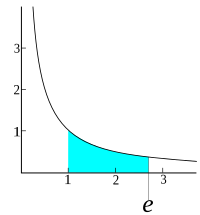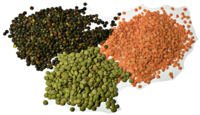
Potential Risk of Residues From Neonicotinoid‐Treated Sugar Beet Flowering Weeds to Honey Bees (Apis mellifera L.)
Sign Up to like & getrecommendations! Published in 2023 at "Environmental Toxicology and Chemistry"
DOI: 10.1002/etc.5602
Abstract: In 2018 the European Union (EU) banned the three neonicotinoid insecticides imidacloprid, clothianidin (CLO), and thiamethoxam (TMX), but they can still be used if an EU Member State issues an emergency approval. Such an approval… read more here.
Keywords: toxicology; beet; honey; sugar beet ... See more keywords

Comparative characterization of sugar beet fibers to sugar beet pectin and octenyl succinic anhydride modified maltodextrin in aqueous solutions using viscometry, conductometry, tensiometry and component analysis.
Sign Up to like & getrecommendations! Published in 2022 at "Journal of the science of food and agriculture"
DOI: 10.1002/jsfa.12137
Abstract: BACKGROUND Knowledge about specific functional characteristics, such as viscosimetric, conductometric, tensiometric and structural properties of polysaccharide aqueous solutions is highly important in the successful and adequate application in food emulsion formulation. First time detailed characterization… read more here.
Keywords: beet pectin; aqueous solutions; beet; sugar beet ... See more keywords

A new method to validate and compare varietal resistance and yield tolerance of sugar beet (Beta vulgaris) against the beet cyst nematode, Heterodera schachtii Schmidt
Sign Up to like & getrecommendations! Published in 2022 at "Pest Management Science"
DOI: 10.1002/ps.6885
Abstract: Abstract BACKGROUND Beet cyst nematode, Heterodera schachtii Schmidt is a global threat to sugar beet crops, and is found in every major sugar beet growing region. Annual losses due to this nematode can be severe,… read more here.
Keywords: beet cyst; beet; sugar beet; yield ... See more keywords

Characterization and Pathogenicity of Rhizoctonia Species Causing Root Rot and Damping-off on Sugar Beet in Turkey.
Sign Up to like & getrecommendations! Published in 2021 at "Current microbiology"
DOI: 10.1007/s00284-021-02470-4
Abstract: During 2015-2017 growing seasons, seventy-one isolates of Rhizoctonia spp. were obtained from the samples collected from the sugar beet fields of Konya province, which is one of the most important sugar beet growing areas of… read more here.
Keywords: sugar beet; beet turkey; rhizoctonia; pathogenicity ... See more keywords

A Binucleate Rhizoctonia anastomosis group (AG-W) is the causal agent of sugar beet seedling damping-off disease in China
Sign Up to like & getrecommendations! Published in 2019 at "European Journal of Plant Pathology"
DOI: 10.1007/s10658-019-01749-4
Abstract: Two binucleate Rhizoctonia (BNR) isolates (HLJ-21 and HLJ-57) were recovered from diseased sugar beet seedlings in Heilongjiang Province, Northeastern China in May, 2015. The two isolates were identified as members of the anastomosis group (AG)-W… read more here.
Keywords: sugar beet; damping disease; beet; china ... See more keywords

Application of beet sugar byproducts improves sugar beet biofortification in saline soils and reduces sugar losses in beet sugar processing
Sign Up to like & getrecommendations! Published in 2021 at "Environmental Science and Pollution Research"
DOI: 10.1007/s11356-021-12935-5
Abstract: Improving the chemical and physical properties of saline soils is crucial for the sustainable production of sugar beet and efficient processing of beet sugar. Here, the impacts of the application of treated filter cake on… read more here.
Keywords: sugar beet; sugar loss; beet sugar; sugar ... See more keywords

Small RNA Sequencing in Sugar Beet Under Alkaline Stress
Sign Up to like & getrecommendations! Published in 2020 at "Sugar Tech"
DOI: 10.1007/s12355-020-00869-0
Abstract: MiRNAs have been proved to participate in the abiotic stress responses in plants. Sugar beet can adapt itself to different abiotic stresses, in particular the alkaline and salinity stresses. Nonetheless, the number, features, sequences and… read more here.
Keywords: small rna; alkaline stress; sugar beet; rna sequencing ... See more keywords

Valorization of sugar beet waste as an additive for fly ash geopolymer cement cured at room temperature
Sign Up to like & getrecommendations! Published in 2021 at "Journal of building engineering"
DOI: 10.1016/j.jobe.2021.102989
Abstract: Abstract As known, Class F fly ash-based geopolymer system needs heat curing to obtain good properties. The heat curing of this system hinders its wide applications especially in the case of cast of situ. Thus,… read more here.
Keywords: beet; cured room; fly ash; room temperature ... See more keywords

Molecularization of Foam-Active Saponins from Sugar Beet Side Streams (Beta vulgaris ssp. vulgaris var. altissima).
Sign Up to like & getrecommendations! Published in 2020 at "Journal of agricultural and food chemistry"
DOI: 10.1021/acs.jafc.0c04603
Abstract: This work focuses on the isolation and characterization of saponins with a very low-bitter intensity originating from sustainable plant materials, in particular the sugar beet pulp by-product stream. Via a concise foam activity screening of… read more here.
Keywords: foam active; sugar beet; molecularization foam; saponins sugar ... See more keywords

Fast and Sensitive LC-MS/MS Method for the Quantitation of Saponins in Various Sugar Beet Materials.
Sign Up to like & getrecommendations! Published in 2020 at "Journal of agricultural and food chemistry"
DOI: 10.1021/acs.jafc.0c05836
Abstract: An LC-MS/MS method was developed for the simultaneous quantitative analysis of the following 11 triterpene saponins within different sugar beet materials and plant compartments: betavulgaroside I (1), betavulgaroside II (2), betavulgaroside III (3), betavulgaroside IV… read more here.
Keywords: sugar beet; method; saponins within; beet materials ... See more keywords

Limited Tyrosine Utilization Explains Lower Betalain Contents in Yellow than in Red Table Beet Genotypes.
Sign Up to like & getrecommendations! Published in 2017 at "Journal of agricultural and food chemistry"
DOI: 10.1021/acs.jafc.7b00810
Abstract: Betalains are tyrosine-derived pigments that consist of red-violet betacyanins and yellow betaxanthins. These pigments are major sources of natural food dyes in the United States. Decades of table beet breeding efforts have increased betalain pigmentation,… read more here.
Keywords: beet genotypes; yellow red; tyrosine; table beet ... See more keywords